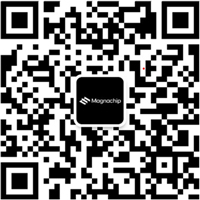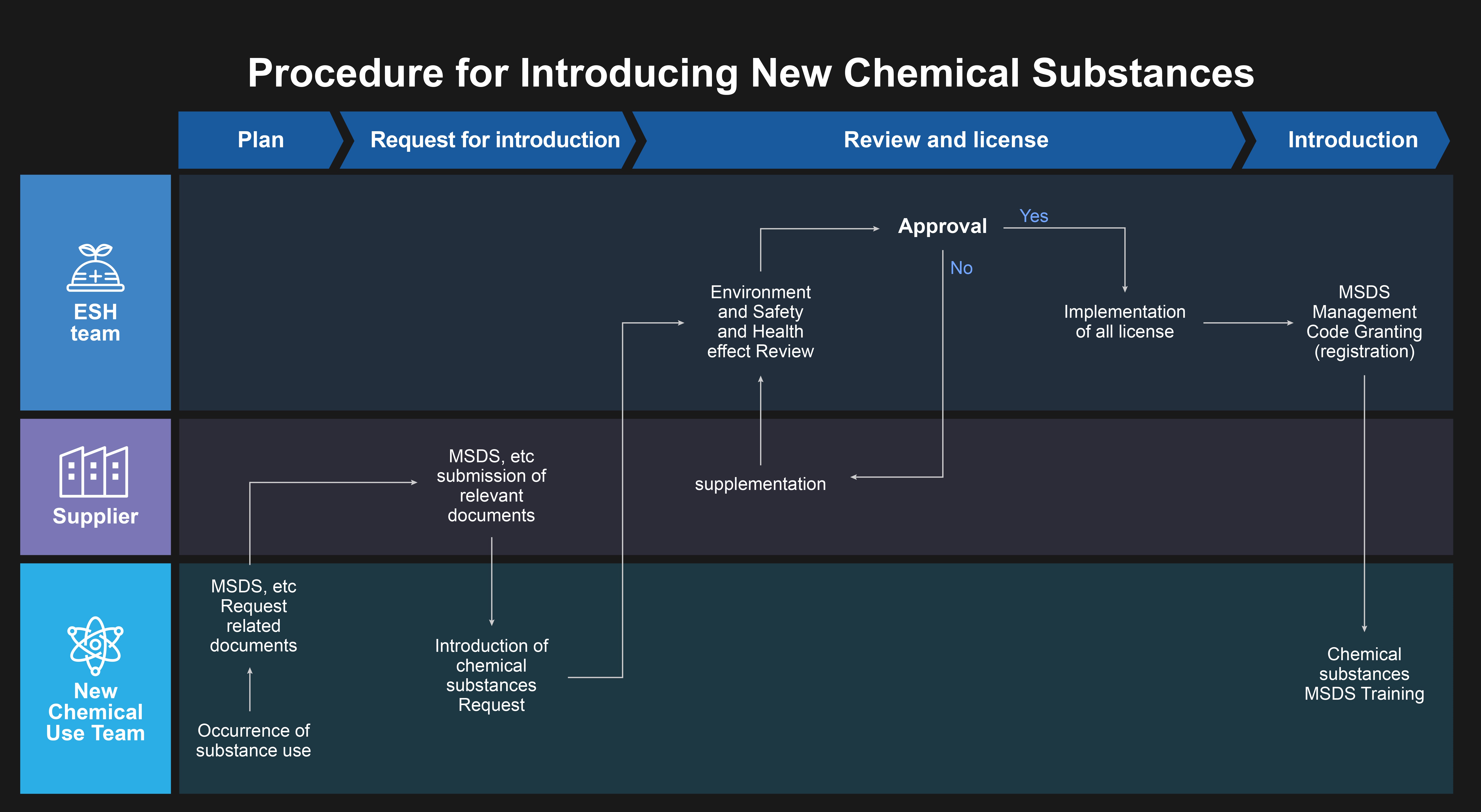

With a global customer base, delivering our products to the right place at the right time is of crucial importance. We also strive to ensure our suppliers adhere to the same ethical and environmental principles under which we operate.
Supplier approval assessment procedure
We have established standards and procedures for approving or canceling vendors that supply the raw and subsidiary materials used in our product manufacturing. Every approval is based on the supplier’s compliance with all applicable government regulations regarding safety and the environment in both the seller’s and buyer’s countries.
Our head of purchasing team is responsible for evaluating and reviewing suppliers to ensure they meet Magnachip’s purchasing requirements. Approval categories include, but are not limited to: quality management, materials/sub-contractors/internal quality control, environmental/safety and labor/human rights. Please see below for more information on how we address ethical issues in the supply chain.
Supplier evaluation procedure
We also maintain an annual supplier rating procedure designed to achieve optimal supplier management. Our head of purchasing team is responsible for establishing an annual evaluation plan, conducting the evaluation, notifying suppliers of the results, and creating a detailed follow-up plan based on the evaluation result to ensure continuous management. Other internal teams, including Quality, ESH and Production Engineering, also support the supplier evaluation process, as requested by the head of purchasing team.
Evaluation categories for raw material suppliers include, but are not limited to, business, environment and labor/human rights. Additionally, we provide coaching and support to supplies in their efforts to obtain Quality Management System certification (IATF 16949).
Ethics and social issues in the supply chain
In order to uphold our ethical standards across our supply chain, the purchasing team evaluates new and existing suppliers before and after the commencement of transaction, taking into account several important ethical considerations:
- Labor/human rights: concerning the freedom of choice for employees, prohibition of child labor, reasonable working hours and wages, commitment to humanitarian treatment and to tackling discrimination
- Ethics: concerning the supplier’s business ethics policies, employee code of conducts, establishment of whistleblower reporting and protection system and mandatory ethics training
Under our “Green Manufacturing Management Rule”, we share our ESH Policy with our suppliers, and request they implement it. In addition, we request that our suppliers confirm their compliance with the Uyghur Forced Labor Prevention Act.
Every year, our C&IA Team sends an email to our partner companies, informing them of our commitment to ethical management and linking to our whistleblower hotline and website.
Conflict minerals
We support and comply with Section 1502 of the U.S. Dodd-Frank Wall Street Reform and Consumer Protection Act (the “Conflict Minerals Rule”).
For more information on our conflict minerals, please refer to our Conflict Minerals Reports:
2023 Magnachip Conflict Minerals Report
Material traceability in relation to conflict materials
In addition to the above commitment, we continually address responsible mineral sourcing issues in our supply chains. We require our key suppliers to engage in due diligence by completing the Conflict Minerals Reporting Template (CMRT) and Conflict Extended Materials Reporting Template (EMRT) developed by the Responsible Mineral Initiative (RMI).
As part of the assessment process, we also submit the list of suppliers’ materials to certain customers, in order to cross-check the provenance. In addition, we include in our purchase order form a request that the supplier declare that it does not use smelters that have not been validated to be conflict free. In the event we discover a supplier uses such smelters, we request the supplier take action to improve.


